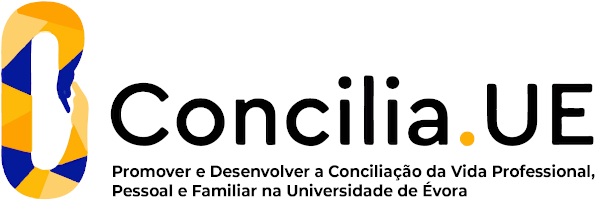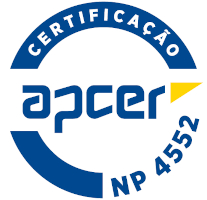2025
General Pathology
Name: General Pathology
Code: MVT15235I
3 ECTS
Duration: 15 weeks/78 hours
Scientific Area:
Veterinary Medicine
Teaching languages: Portuguese
Languages of tutoring support: Portuguese, English
Regime de Frequência: Presencial
Learning Goals
This course aims to introduce the general pathology through the approach of basic concepts, technical and scientific nomenclature with appropriate medical terms, and an understanding of the disease's mechanisms.
At the end of this UC, the student must master the nomenclature related to pathology; understand the basic mechanisms of the disease; to observe, describe, interpret and infer the meaning of the basic changes in cells, tissues, and organs, and also to know how to recognize these lesions microscopically, preparing them for later UCs.
The student will also be encouraged to understand and know how to perform basic diagnostic techniques used in cytopathology and histopathology.
At the end of this UC, the student must master the nomenclature related to pathology; understand the basic mechanisms of the disease; to observe, describe, interpret and infer the meaning of the basic changes in cells, tissues, and organs, and also to know how to recognize these lesions microscopically, preparing them for later UCs.
The student will also be encouraged to understand and know how to perform basic diagnostic techniques used in cytopathology and histopathology.
Contents
THEORETICAL PROGRAM
General cell pathology:
cell injury: degeneration and cell death; cell injury agents and mechanisms;
Inflammation:
acute inflammatory reaction (vascular and cellular changes, inflammation mediators, evolution of acute inflammation), chronic (cells and mediators, evolution of chronic inflammation, cell regeneration and fibrosis) and granulomatous (types of granulomatous reaction, lesion morphology and examples);
Hemodynamic changes:
edema, hemorrhage, thrombosis, embolism, infarction and shock;
Pathology of metabolites:
disturbances in the metabolism of lipids, carbohydrates, proteins, calcium and pigments;
Pathology of cell multiplication and differentiation:
Hyperplasia, hypertrophy, atrophy, metaplasia and dysplasia reactions;
Neoplasm:
general concepts, nomenclature, epidemiology, etiology and carcinogenesis.
PRACTICAL PROGRAM
Observation of histopathological preparations of lesions related to the themes taught in theoretical classes
General cell pathology:
cell injury: degeneration and cell death; cell injury agents and mechanisms;
Inflammation:
acute inflammatory reaction (vascular and cellular changes, inflammation mediators, evolution of acute inflammation), chronic (cells and mediators, evolution of chronic inflammation, cell regeneration and fibrosis) and granulomatous (types of granulomatous reaction, lesion morphology and examples);
Hemodynamic changes:
edema, hemorrhage, thrombosis, embolism, infarction and shock;
Pathology of metabolites:
disturbances in the metabolism of lipids, carbohydrates, proteins, calcium and pigments;
Pathology of cell multiplication and differentiation:
Hyperplasia, hypertrophy, atrophy, metaplasia and dysplasia reactions;
Neoplasm:
general concepts, nomenclature, epidemiology, etiology and carcinogenesis.
PRACTICAL PROGRAM
Observation of histopathological preparations of lesions related to the themes taught in theoretical classes
Teaching Methods
Theoretical classes and laboratory practices. In the theoretical classes the subjects are presenting using real photographs. The practical classes consist of the observation of microscopic
lesions, on the topics taught in the theoretical classes. The observed cases correspond to actual clinical occurrences. The practical program also includes a macroscopic lesion
observation about rejected organs in slaughterhouses and a on the basics of immunocytochemistry.
The evaluation consists of an option for the continuous evaluation scheme (two written frequencies) or the final evaluation scheme (written examination). The student must obtain a minimum grade of 9.5 values on each of the frequencies or in the exam.
In the practical assessment, the student must identify the lesion in two histopathological preparations. IThe inhability to identify the injury in any of the two preparations will score 0 and he/she fails the practical assessment. Final score= 90%T+10%P.
lesions, on the topics taught in the theoretical classes. The observed cases correspond to actual clinical occurrences. The practical program also includes a macroscopic lesion
observation about rejected organs in slaughterhouses and a on the basics of immunocytochemistry.
The evaluation consists of an option for the continuous evaluation scheme (two written frequencies) or the final evaluation scheme (written examination). The student must obtain a minimum grade of 9.5 values on each of the frequencies or in the exam.
In the practical assessment, the student must identify the lesion in two histopathological preparations. IThe inhability to identify the injury in any of the two preparations will score 0 and he/she fails the practical assessment. Final score= 90%T+10%P.
Teaching Staff
- Sandra Maria da Silva Branco [responsible]





















